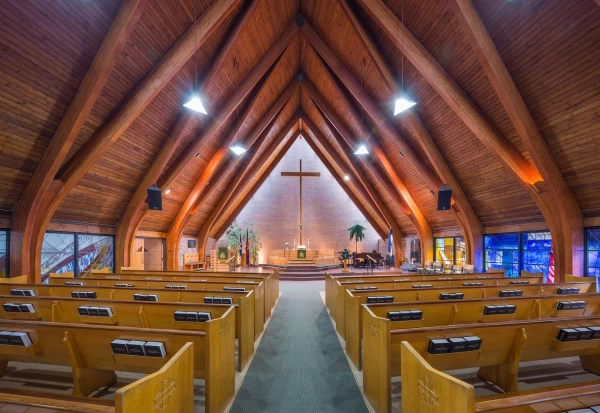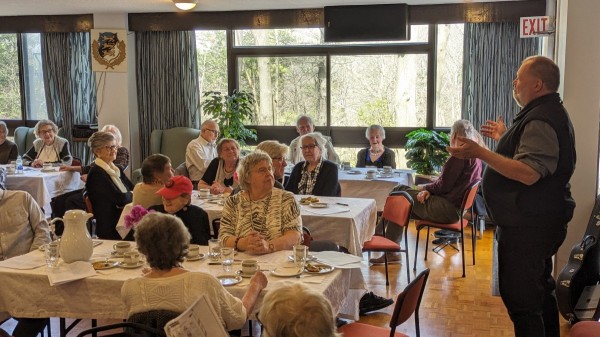I first heard of Ike when he stormed a coast and thousands died. That was in June 1944 at Normandy, France, and the “Ike” was General Dwight D. Eisenhower. I was reminded of the old Ike more than fifty years later, in September 2008, when a hurricane known by the same name whirled in the Caribbean Sea, not far from where I live, in Pearland, Texas, a suburb of Houston.
Cuba was Hurricane Ike’s first victim. Forty Cubans met hurricane-related deaths, but the worst was yet to come. In Houston, we watched on television as Ike moved slowly past the tip of Florida into the Gulf of Mexico. Where on the U.S. coast would Ike make landfall? We could only watch and wonder as the storm whirled closer.
Texans on the Gulf Coast made various preparations for Ike. Hurricane Rita, spawned in the 2005 hurricane season, was still fresh in our memories. Houston had been ill-prepared for Rita, and residents of Houston and surrounding areas were caught in a horrible traffic jam, as they all tried to flee at the same time. Fortunately, Rita made landfall east of Houston, in a less populated area.
On Wednesday, September 10, Hurricane Ike was still a couple of hundred kilometers from the Texas coast. We followed the path of the hurricane on television. The warm waters of the Gulf of Mexico strengthened the hurricane, and it was reclassified from a category 2 to a category 3. Near the hurricane’s center winds were 160 kilometers per hour, and it seemed to be heading for Galveston Island and Houston.
Our house was built in 2006 to new standards, to withstand winds of up to 216 kph. But it was still in danger from falling trees and flooding. Weather experts warned of damage from a huge tidal surge, a wall of water, which would be brought to shore by the winds of Hurricane Ike.
People living below a certain elevation, along the shore or inland, received orders to evacuate. Under this evacuation order, 2.5 million people evacuated northward along designated highways in the course of two days. Buses were provided for elderly people, but many refused to leave their homes. A seawater surge seven meters high was predicted for Galveston Island, and officials issued evacuation orders to the entire island. But only two-thirds of the island’s 65,000 inhabitants left; the rest decided to ride out the storm on the island.
Our house is about 48 km north of Galveston. At an elevation of 10 meters above sea level, we were not in danger from the predicted surge. We received strong recommendations from city officials that we stay put, leaving the highways free for the seemingly endless caravan created by people who were under orders to evacuate.
Thursday in Houston dawned sunny. A light wind blew. It was hard to believe the advertised danger. On the beaches, people were surfing and swimming. A cautious person, I froze extra ice in the refrigerator’s freezer and bought bottled drinking water. I filled our cars’ gas tanks, took out extra cash from the bank, and put important documents into a briefcase--just in case.
The Friday morning weather programs on the television showed the huge storm rotating counter-clockwise in the Gulf of Mexico, about equidistant from Florida’s west coast and Galveston. In cross-section Hurricane Ike covered more than 360 km. It could have covered Estonia from Lake Peipsi to the tip of the westernmost island.
Ike makes landfall
Friday afternoon, the wind increased in strength, and low dark clouds blew up from the south. The sky was the color of a bruise. I backed our cars against the garage doors so that the wind, as it blew harder, would not dislodge the doors from their tracks.
Hurricane Ike made landfall on the eastern tip of Galveston Island. It continued northwest, its path not far from the town of Nassau Bay, where we had lived only three years earlier. Nassau Bay is only 6 km from the open waters of the Gulf, whereas our home in Pearland is 24 km from the Gulf, and on higher ground. Our concerns shifted to our airplane, which was undergoing its annual inspection at the Galveston airport.
On Saturday, September 13, at 2 a.m., hurricane force winds arrived in Pearland. Before midnight the wind was already bending trees to their limits. But the wind was from inland because we were on the west side of the counter-rotating storm center. Winds on the east side of a hurricane are more damaging.
Hurricane Ike’s center or “eye” was 60 km across, and a portion of it passed over our house. We lost our cable television signal, and switched to radio broadcasts for the news. Outside, the wind in the trees made an eerie whine. Sometimes the whine let up briefly, only to start again. After midnight we lost electricity. We were in total darkness except for occasional flashes of exploding transformers kilometers away.
I continued to listen for news on a battery-powered radio. I heard reports of areas of Houston that had lost power. After a while, all must have been in darkness as the wind and rain felled utility poles and destroyed transformers. News came from the coastal areas that houses were flooded by waters cast up from the bay. Reporters retreated to higher ground and strong buildings. Finally I fell asleep.
When I woke to daylight Saturday morning, the wind was still whining in the trees, but had lessened in strength and speed. Rain pelted down. The wind had pushed the rain inside our house through the window frames, but our neighborhood was spared flooding. We appeared to be on the “dry“ side of the counterrotating storm. Also, new housing developments such as ours include rainwater retention ponds. At about 10 a.m. the rain stopped. Cautiously, I ventured out. One of our large trees had split and half of it had fallen nicely between our fence and house without damaging either.
Neighbors began to emerge from their houses to assess the damage. We were quiet, as if in a trance. I was reminded of wartime, when people emerged from their cellars after a bombing raid. The trunks of many trees were broken in half, and treetops rested on roofs. Parts of fences had been blown down. But in my immediate neighborhood there was no major damage. Telephones and cell phones did not work. We had no way of reporting to anyone that we were all right. Farther away from us, fallen trees and telephone poles blocked the roads. Radio broadcasts warned us to beware of possible live electrical wires on the ground.
Houston powerless
On Sunday morning, we met with neighbors to assess our situation. We heard on our battery-powered radio that three million of the four million Houston area residents had lost power. We had little hope of quick restoration of service. One neighbor had an electric generator, which he shared within our cul-de-sac to provide electricity, one refrigerator at a time.
The weather became sunny again. Without air conditioning, the inside room temperature was same as outside, 32 degrees C, and it was clear that our refrigerators soon would be useless. We decided to pool our food, and we cooked and ate the most perishable food first. Luckily, several of us had gas-powered stoves. We set up tables in the middle of our cul-de-sac, and feasted on morsels folks had saved in refrigerators and freezers for some special occasion. It was community spirit at its best. So went Sunday and Monday.
On Tuesday a group of enterprising Hispanics appeared and offered to remove fallen trees. They were excellent workers and soon my tree limbs were stacked on the curb as logs. Several houses had lost roof shingles, and sections of roofs were covered with sheets of blue plastic. Town crews cleared the main roads, leaving huge piles of debris on curbs. By radio we received word that FEMA, the federal emergency agency, had brought in supplies that had been pre-positioned further north in anticipation of the hurricane. I drove to a FEMA distribution point and after a 50-minute wait in an orderly line of cars, got to the trucks where volunteers threw into each car trunk: bottled water, ice, and two boxes of ready-to-eat food. I asked only for ice to keep our remaining food from spoiling. I was curious and would have liked to taste ready-to-eat food, but I resisted, realizing that many people had lost everything, were housed in shelters, and needed the food.
Together with our neighbors we ate well and we felt festive. But by Wednesday evening our food supplies were exhausted. Stores were still closed, since without electricity cash registers don’t operate. I used this occasion to thoroughly clean our refrigerator. Because of the heat, sleeping was uncomfortable. There was breeze, but some neighbors had acquired gasoline-powered generators and the generator noise made it impossible to keep the windows open. We had no telephone, no cell phone, no electricity, no internet, no air conditioning, no refrigeration--it was just like in the country when I summered in Aegviidu as a child, of which I have only fond memories! The only difference was that in Houston we had running water inside the house.
On Thursday, September 18, we locked up our house and drove 770 kilometers to visit our son in Oklahoma. Thankfully, our car’s gas tank was full. We left in the daylight, since the traffic lights had not yet been restored in most of Houston and we had to cross intersections slowly and cautiously. People were courteous, and I know of no collisions. Driving after 9 p.m. was forbidden in the city to help curb looting of deserted houses. We returned home on Monday, September 21, when we received word that power had been restored to our subdivision.
Slow restoration of services
Two weeks after Hurricane Ike made landfall, 650,000 people were still without power. Traffic at intersections was slow. Cars stopped, then crossed alternately. As electricity was restored to gas stations, gas could be pumped again. Some stores with emergency generators had re-opened early on and sold essential goods: rope, bottled water, and saws. The people on Galveston Island had little hope for a quick restoration of services.
On Wednesday, September 23, I drove toward Galveston. Road signs proclaimed that only emergency workers and police would be permitted onto the island. The traffic was moving and I wanted to go as far as possible. Near the bridge to the island was a police checkpoint. I was asked where I was going, to which I replied “to the airport.” To my surprise the officer saluted me and said that I had my work cut out for me. At that moment I did not know that the airport as such had ceased to exist but had been converted to a staging area for ice, bottled water, and ready-to-eat food for the residents who would be permitted to return onto the island in a few days. Perhaps the policeman saw my white magnetic airport gate opener and thought it was a worker’s badge.
As I drove on toward the airport, I attempted to pass a slow-moving caravan of ambulances, sent in anticipation of opening up the island. I passed some of them, and then had to merge with them into a single line. At the next checkpoint, I was waved through with the ambulance caravan, into the airport grounds. I found myself among many dozens of eight-wheelers, with engines running to refrigerate their load of ice.
I saw no airplanes on the field. The fence surrounding the airport was a shambles. Along the periphery of the field were hangars and workshops. When I got to where our airplane was supposed to be stored, the hangar was empty except for seaweed, ripped flight manuals and maps, and unidentifiable metal fragments from other airplanes. Then I spotted our plane 30 meters away, its tail broken, lying on top of a collapsed hangar. We had planned that if a hurricane ever threatened the island, we would fly the airplane north out of danger. But at this particular time, the plane was being reassembled from its annual checkup and needed just one more day to be flight ready again.
Bye-bye Cessna
The hurricane caused a 2.5-meter-high surge of seawater to flood over half of the island. The airport received the full measure of the surge, and carried the airplane from its hangar over a fence onto a side road. After the water had receded half a day later, the road-crews pushed everything off the road including—humiliatingly--our airplane. But the damage that the plows did to the plane was incidental--once salt water got into its mechanisms, the airplane was doomed. So our Cessna was surrendered to the power of wind and water after 34 years of faithful service.
I drove around Galveston city along streets that had been cleared. Few people were visible. The people who had stayed on the island and lived through the hurricane still had to leave due to lack of power, water, and sewage service. Buildings that had been on the seashore on pilings, such as souvenir shops and restaurants, were gone. Away from the shore the streets were lined with water-soaked carpets and furniture. Later I read that the houses that remained standing were attacked with health-threatening poisonous molds, which in our warm climate grow fast on moist surfaces. I also read that 33 corpses were found under the debris.
Two months later, just before Christmas the city of Galveston had restored power to some areas, including the main street, which allowed them to have their traditional festival, Dickens on the Strand. Attendance from the mainland was unexpectedly high. The Scandinavian Folk Dance club made record sales of its Glögg--hot spiced wine--at the event.
Now, more than nine months later, Galveston Island is still recovering from the invasion of Hurricane Ike. Damaged seawalls are still being repaired. In other areas, the hurricane had moved the seashore 40 to 90 meters inland, causing legal problems for those wishing to rebuild. About 60 percent of the original residents have returned.
It is 2009, and hurricane season again. Where and when will this year’s hurricanes hit the gulf coast?

Meeting Hurricane Ike
Archived Articles | 24 Jul 2009 | Arved PlaksEesti Elu
Archived Articles
TRENDING






















